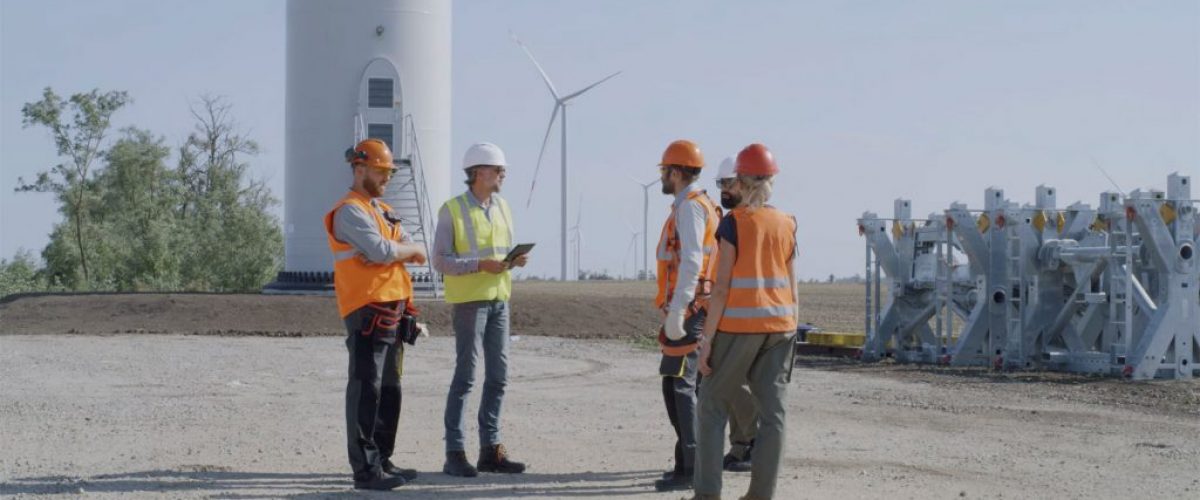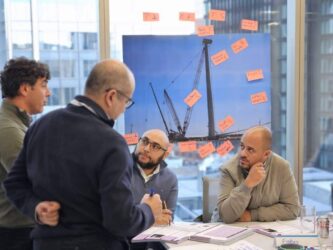Covid-19 has changed how we live, work and learn. Alongside the challenges, it has also brought opportunities. We look at how the shift from in-person to virtual learning in the wind power sector has encouraged collaboration, stimulated creativity and led to tangible on-site improvements.
There is no doubt that the Covid crisis has accelerated existing trends towards virtual learning. But at ARMSA Academy we have long recognised that novel ways of delivering digital training in the workflow can support informed decision-making and contribute to safer, more productive projects.
We have continued to develop and build on our programmes during the pandemic. And our experience, supported by feedback from course participants, is that there are significant, and sometimes unexpected, advantages to leaving the classroom behind.
Far from being a second choice when in-person training is not available, virtual learning in the workflow can lead to more immediate on-site improvements. It can also be more collaborative, innovative, creative, and ultimately more fun.
Instant action
Safety training in the wind power sector has traditionally been delivered in-person, with learners committing to four or five consecutive days of classroom-based teaching. On the plus side, this allows time to focus on the learning process, leaving behind the distractions of work. On the negative side, it means a large volume of information has to be absorbed in a limited period. Learners then go back to their workplaces, perhaps at best implementing just 20% of what of they’ve learned.
Under Covid restrictions, with in-person training off the table, we have been delivering our IOSH Managing Safely for Wind Power course virtually over four to six weeks in bite-sized two to three-hour sessions. As well as this new structure, the curriculum includes live presentations, group work and specific video assignments to encourage engagement and active problem solving.
We have found that the two hours of interactive training in the morning, followed by a return to the “day-job” in the afternoon, has encouraged instant action on-site. People quickly identified areas for improvement and were able to implement their ideas straightaway, benefiting the business and themselves. The more dispersed nature of the course, combined with time to think about and present assignments, also encouraged greater collaboration and discussion.
Sophia Palm, a project manager at Nordex, used one of her assignments to engage her organisation’s head of site operations for the Nordic Region, Michael Thomas, in improving workstation ergonomics in construction site offices. In the video she produced for the assignment, Thomas talks about his own experiences and explains how their conversation the previous day had been “a real eye-opener”.
Thomas also describes his plan to visit stores to look for ergonomic portable laptop solutions on the way home from the site that day. They then move on to discuss longer-term plans to specify more ergonomic equipment, to encourage breaks from the screen, and to reorganise the layout of site offices to stimulate team collaboration.
A creative dynamic
One of the more unexpected outcomes we have identified is the different dynamic that has played out during the virtual courses, compared to traditional classroom-based teaching. Learners have not only had more time to put together assignments, but also more personal space to express themselves in ways that best suit them. This has made the learning experience more diverse, engaging and enjoyable for all participants.
The requirement to produce a video assignment on a specific hazard produced a range of creative responses. To illustrate his talk on the hazards involved in access and egress, Niklas Høvring Johansen, a site manager at Vestas, brought along a model of a wind turbine. His colleague Anne-Sophie Bracht, an associate project manager at Vestas, delivered a presentation without any spoken words; instead she used background music and brief messages written on a succession of white cards, echoing a scene in the film Love Actually.
Reflection before action
At the end of each session, participants have a few minutes to reflect and write down what they have learned and how they might implement practical changes. Again, this encourages instant action after each bite-sized module, rather than leaving it to delegates to digest the whole course before reflecting on how they might apply their learning.
Kevin Harte, a service co-ordinator at Nordex, noted immediately after the first module said that he wanted to involve himself more actively in the production and approval of risk assessments and method statements for site operations. After the third module on identifying hazards, he felt he had learned more about “how in depth my thought process needs to be when considering the hazards to be risk assessed but more importantly the reader friendly way in which a risk assessment should be produced so it is useful for those who read or need it”.
As a project manager, Palm referred to how she needed to be “more on the ground observing, listening, asking questions and partaking in activities”, and noted how during the course she had “been more present on the ground to observe works”.
Some delegates attended the course on laptops or tablets directly from their project sites, which allowed instant sharing of experiences. In one example, all learners were able to watch a lifting operation as it happened via a shared screen from fellow delegates sat in a vehicle nearby. Other participants could access and interrogate their internal systems, such as reporting procedures or KPIs, on their laptops in real time.
A learning journey
Our virtual courses form part of a broader learning journey, incorporating 12 months’ access to ARMSA Academy’s performance support sprints. All delegates also record their findings and opinions on our learning platform, which is visible to everyone else in the group for the next year. This means participants can go back and view their own and each other’s completed activities whenever they have a question, need to refresh their knowledge or encounter a problem on-site.
Last year, ARMSA asked leading professionals shaping the wind power sector about their priorities when choosing OSH training. Their answers focused on collaboration, improved team decision-making, active problem solving and social learning.
Virtual learning in the workflow not only encompasses all those key elements, but also nurtures creativity, innovation, and diversity. As we emerge from some of the restrictions imposed by Covid-19, it is clearer than ever that traditional compliance-focused learning outside the workflow is no longer sufficient to meet the demands of today’s fast-paced, collaborative working environments.
Resources
To learn more about decision-making in the workflow, read our blog.
More information about our virtual courses is available here.
Check out our performance support sprint demos here.
Read our market report here.
Learning during Covid-19: virtue out of necessity © 2021 by Khalida Suleymanova – ARMSA is licensed under CC BY-NC-ND 4.0






